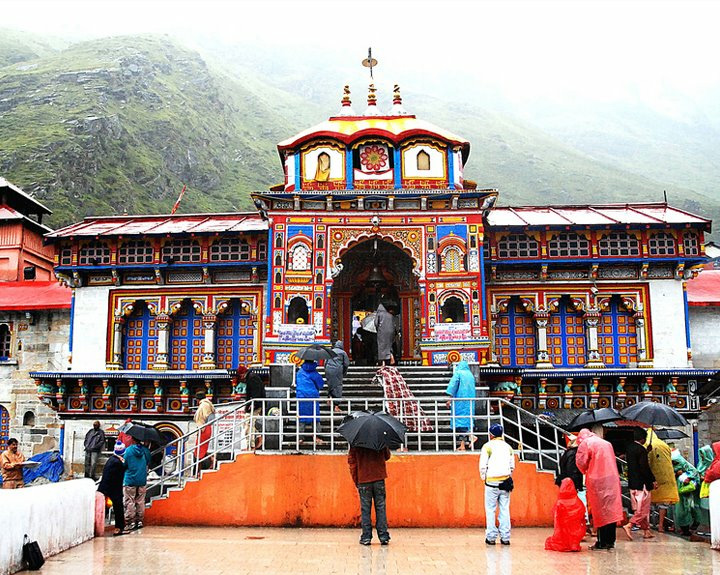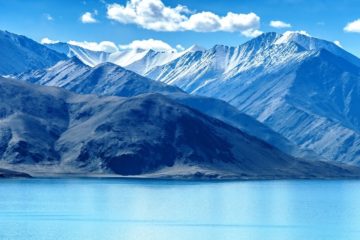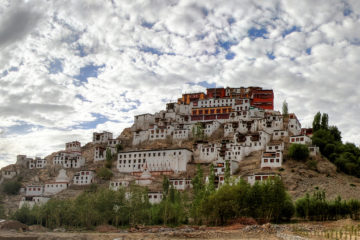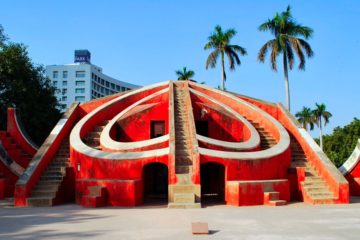If you are one of the ardent adventure aficionados and is longing for your adrenaline kicks amidst lofty mountain peaks, dense thickets or the challenging rapids of the Ganges, Uttarakhand is place to be! Situated at the foothills of the great Himalayan Range, it is one of the newly formed Indian states. While a major portion of Uttarakhand comprises of high soaring peaks, the rest is accomplished by dense forests, stunning river bodies and scenic meadows.
| PLACES COVERED | Haridwar-Joshimath-Badrinath-Gaurikund-Kedarnath-Gaurikund-Sonprayag-Haridwar | ||||||
| DURATION OF TRIP | 6 NIGHTS/7 DAYS | ||||||
| MINIMUM REQUIRED | 2 PAX | ||||||
| ACCOMMODATION | BUDGET ACCOMMODATION/Premium On Demand | ||||||
| DEPARTURE/RETURN LOCATION | PICKUP Haridwar/DROP Haridwar | ||||||
| RETURN TIME | Approximately 6:30 PM/Depends on onward Journey | ||||||
| WEAR | Comfortable athletic clothing, sunscreen. | ||||||
| BASIC INCLUSION |
|
||||||
| BASIC EXCLUSION |
|
DAY - 01 : Arrival Haridwar
Our representative will welcomes you at Haridwar and transfer to the pre booked hotel. Take rest in hotel and get ready for the sightseeing tour of Haridwar. Night stay will be in Haridwar.
DAY - 02 : Haridwar - Joshimath
Leave Rishikesh/Haridwar early morning for Joshimath/Rudraprayag via Devprayag, Ruderprayag, Karanprayag and Nandprayag see those places famous for confluence of two great river and proceed to Joshimath via Chamoli and Pipalkoti. Arrived Joshimath late afternoon visit Adi guru Shankracharya seat Narshimha temple or a visit to Auli (famous winter hill resort for skiing) by lift chair car on extra cost. Night stay at Joshimath/Rudraprayag.
DAY 03 :- Joshimath - Badrinath
Badrinath:- Badrinath is one of the four dhams of the country and situated at an elevation of 3133 mts. above sea level, guarded on either side by the two mountain ranges known as NAR & NARAYAN, with the towering NEEL KANTH PEAK providing a splendid back-drop. This revered spot was once carpeted with wild berries, which gage it the name “Badri Van” meaning forest of berries. Facing the temple at the back of Alaknanda river there is a hot water spring known as TAPT KUND.
Badrinath Temple:– Dedicated to lord Vishnu, the temple of Shri Badrinathji is 15 mts. In height built in the form of a cone with a small cupola of a bull and spire. Legend dates the temple prior to the Vedic age. Extension to Valley of Flowers and Hemkund sahib on DEMAND
DAY 04 :- Badrinath - Gaurikund
After early morning Darshan at Badrinathji again start drive to Sonprayag/Gaurikund. Via Chamoli-Nandprayag- Gauchar, for Rudraprayag, famous for two rivers confluence Alaknanda and Mandakini river). Evening free to enjoy the surroundings. Overnight to stay at Sonprayag / Gaurikund.
Sonprayag :- Situated at the confluence of Soneganga and Mandakini river. The road to Trijuginarayan diverts from here.
Trijuginarayan:- According to legend, this was the place where the weeding of Lord Shiva and Parvati was solemnized. In front of the Shiva temple, is an eternal flame, which is said to be a witness to the marriage. Can be reach by 12 km drive from sonprayag.
DAY 05:- Gaurikund - Kedarnath
Early morning departure to Gaurikund (14 km trekking) after having morning bath at hot spring “KUND” Garurukund leave for trek to Kedarnathji temple by dolly-ponny (on extra cost) (14 km) reach Kedarnathji in afternoon. Rest at bungalow visit to kedarnath ji temple for Aarti, Darshan. Overnight stay at Kedarnath.
Kedarnath :- An imposing sight standing in the middle of a wide plateau surrounded by snow covered peaks. The present temple built in 18th century A.D. by Adi Shankracharya, stands adjacent to the site of earlier temple built by the Pandavas. The inner walls of the assembly hall are decorated with fixtures of various deities and scenes from mythology. Outside the temple door a large statue of the Nandi bull stands as guard.
Dedicated to lord Shiva, the exquisitely architectured, kedarnath temple is considered to be more than 1000 years old. Built of extremely large heavy and evenly cut gray Slavs of stones. It evokes wonder as to how these heavy Slavs had been handled in the earlier days. The temple has a “Garbha Griha” for worship and mandap appt. for assemblies of pilgrims and visitors. A conical rock formation inside the temple is worshipped as lord Shiva in his sadashiva form.
DAY 06:- Kedarnath - Gaurikund - Sonprayag
Trek down from Kedarnath ji to Gaurikund and then drive towards Sonprayag or Guptkashi for night stay.
DAY 07:- Sonprayag to Haridwar
Leave Sonprayag/Guptkashi to Haridwar. Tour end with Happy memory.
PRICES BASED ON BUDGET ACCOMMODATION FOR UPGRADE PLEASE EMAIL
Services are included in the price:-
- A safe and comfortable air-conditioned Car with driver, all inclusive. (Fuel, road and state taxes, toll fees, parking fees, Insurance for Customer & Driver and driver’s food and lodging).
- The car will be with you from your arrival to departure with as many stops to sight see as you want.
- A Driver with excellent skills and record, a good knowledge of the area you are visiting and sufficient English to communicate.
- Transfers and land transportation according to itinerary.
- Accommodation Double or Twin rooms with Bed and Breakfast at all hotels.
- Sightseeing Tours in All Cities as per the above tour plan.
PRICES BASED ON BUDGET ACCOMMODATION FOR UPGRADE PLEASE EMAIL
Services are not included in the prices:-
- Tips, laundry, telephone bills, luggage handling and Beverages.
- Meals unless specified: Lunch or dinner
- Entrances tickets to Monuments
VISA INFORMATION
OVERVIEW
All foreign nationals entering India are required to possess a valid international travel document in the form of a national passport with a valid visa obtained from an Indian Mission or Post abroad.
All Individual visa seekers are requested to apply for the Indian Visa through Online application link , in order to make an application for getting the Indian visa.
The duly signed physical copy of the application form completed in all respect and submitted successfully, is to be submitted at the concerned Indian Visa Application Center (IVAC) or directly to Indian Mission/ Post, on the scheduled date of interview along with the requisite supporting documents. The instructions for filling the form and scheduling the appointment can be seen at Instructions for Online Visa Application. Important technical information for filling online Indian visa application can be referred at Technical Instructions.
The applicants are also requested to visit website of the Indian Mission concerned for detailed information about Indian visa.
ONLINE VISA APPLICATION
All Individual visa seekers are requested to apply for the Indian Visa through online application link. Or can apply by typing the URL: http://indianvisaonline.gov.in/visa/ in the address bar of web browser, in order to make an application for getting the Indian visa. In either case, no hand written application form will be accepted by any of the Indian Mission/ Post, where-ever online Visa facility has been implemented. The application form completed in all respect and submitted succesfully, is to be submitted at the concerned Indian Visa Application Center (IVAC) or directly to Indian Mission/ Post in absence of IVAC, on the scheduled date of interview along with the requisite supporting documents. The instructions for filling the form and scheduling the appointment can be refered at Instructions for Online Visa Application. Important technical information for filling online Indian visa application can be referred at Technical Instructions. If you have already applied online for Indian Visa online and want to know the status of your application,
VISA CATEGORIES
Government of India issues the following visas: Business Visa, Conference Visa, Diplomatic Visa, Employment Visa, Emergency Visa, Entry Visa, Journalist Visa, Medical Visa, Missionaries Visa, Permit to re-enter within 2 months, Research Visa, Student Visa, Tourist Visa, Transit Visa. Please follow the link for details on Visa Provision and supporting documents
VISA PROCESSING TIME
Upon receipt of the Visa Application through Indian Visa Application Center or directly, the Indian Mission/ Post requires a minimum of three working days to process the case and issue a visa depending upon the nationality and excluding special cases.
PHOTO REQUIREMENTS
Online India Visa Application allows the Applicant to upload a digital photograph of self to complete the online visa application.
Guidelines/procedure to upload a digital photograph
The digital photograph to be uploaded along with the Visa application should meet the following requirements:
Format – JPEG
Size
Minimum 10 KB
Maximum 300 KB
The height and width of the Photo must be equal.
Photo should present Full face, front view, eyes open.
Center head within frame and present full head from top of hair to bottom of chin.
Background should be plain light colored or white background.
No shadows on the face or on the background.
Without borders.
Make sure that photo presents full head from top of hair to bottom of chin. Head should measure 1 inch to 1-3/8 inches (25mm to 35mm). Make sure eye height is between 1-1/8 inches to 1-3.
FEE FOR INDIAN VISA
The visa fee depends upon the type of applied for and duration of visa. Visa fee is divided into various types depending upon the case viz; Basic fee, special fee, processing fee by out-sourcing agency. During the online registration process, at the end of the process the basic fee shall be displayed. However, this fee shall be indicative only and final fee shall be charged while submitting the application at the respective counters Fee once received are non-refundable even if the visa application is withdrawn, the visa is not granted, or if visa issued is of shorter duration of period than applied for or otherwise issued or returned at a time or on terms and conditions that may vary from those sought by the applicant. For further information on this, please check with local embassy office or Indian Visa Application center office or websites for information on applicable fee and payment methods.
VISA PROVISION
| Sl. No. | Type of Visa | Period for which granted | Entry – Single (S), Multiple (M), Double | Documents required with application | Extendable in India |
| 1 | Tourist | 180 days | M | – | No |
| 2 | Transit | 15 days | S/ Double | Return/ onward journey ticket | No |
| 3 | Business | 5 years | M | Documents to prove bonafide purpose (Company’s letter etc.) | Yes |
| 4 | Employment | 1 year/ period of contract | M | Proof of employment (appointment document), terms and conditions | Yes |
| 5 | Student | Period of course/ 5 years | M | Proof of admission in Indian Institution | Yes |
| 6 | Foreigners of Indian Origin | 5 years | M | Proof of being of Indian Origin | Yes |
INSTRUCTIONS
- Online application form:
This application form is meant for those foreigners who are applying for visa from outside India.
Each online application form is meant for one person only. Separate application has to be filed for each applicant.
Furnish information exactly in the manner asked for in the forms, especially the names, address and date of birth.
Applicants are required to verify the application details before submitting the online application. They have an option to save the online application form, in case it is not to be submitted.
Once the online application form is submitted by the applicant, then further modifications are not allowed. Hence applicants are requested to check and validate the details before submitting the online application form.
Applicants are requested to keep the Application Id (generated automatically after the submission of online form) for further communications.
- Appointment Scheduling:
Applicant can schedule the appointment as per his/ her convenience with the concerned Indian Mission.
Each applicant to schedule a separate appointment with the Indian Mission
- Process for filling up online application form:
Applicant shall access the Visa Application system online through the following link: http://indianvisaonline.gov.in/visa/.
Applicant visits the above mentioned web link and selects the Indian Mission from where he intends to apply for the Visa from the tab “Select Mission”.
Applicant fills the application on-line as per the forms standardized by the Ministry.
After filling the form and submitting it, the system shall automatically generate a Application Id. Applicants are requested to keep this Application Id for further communications with the concerned Indian Mission.
System will automatically ask the Applicant for the following confirmation: “Select ‘Yes’ if the applicant want to seek appointment and make payment online or ‘No’ if the applicant just want to print the submitted application form.”
If the applicant response is “No”, then it is requested by the applicant to take the print out of the submitted online application form and approach the concerned Indian Mission for submission of the online form along with supporting documents.
If the response from applicant is “yes” then the system automatically takes the link to perform the following:
Selection of Date and Time of appointment at the concerned Indian Mission
Calculation of Visa fee, service charge, VAT etc. as applicable according to the Visa type
E Payment using service provider’s payment system
In case the facility of Appointment Scheduling and e-Payment is not available for the concerned Indian mission, then applicant has to take the printout of the online application form and visit the concerned Indian Mission to submit the same along with supporting documents and make the payment.
Indian Culture: Traditions and Customs of India
India’s culture is among the world,s oldest; civilization in India began about 4,500 years ago. Many sources describe it as “Sa Prathama Sanskrati Vishvavara” — the first and the supreme culture in the world, according to the All World Gayatri Pariwar (AWGP) organization.
Western societies did not always see the culture of India very favorably, according to Christina De Rossi, an anthropologist at Barnet and Southgate College in London. Early anthropologists once considered culture as an evolutionary process, and ”every aspect of human development was seen as driven by evolution,” she told Live Science. “In this view, societies outside of Europe or North America, or societies that did not follow the European or Western way of life, were considered primitive and culturally inferior. Essentially this included all the colonized countries and people, such as African countries, India, and the Far East.”.
However, Indians made significant advances in architecture (Taj Mahal), mathematics (the invention of zero) and medicine (Ayurveda). Today, India is a very diverse country, with more than 1.2 billion people, according to the CIA World Factbook, making it the second most populous nation after China. Different regions have their own distinct cultures. Language, religion, food and the arts are just some of the various aspects of Indian culture. Here is a brief overview of the culture of India.
Language
India has 28 states and seven territories, according to the World Health Organization. There is no official language in India, according to a Gujarat High Court ruling in 2010. Many people living in India also write in Devanagari script. In fact, it is a misconception that the majority of people in India speak Hindi. Though many people speak Hindi in India, 59 percent of India residents speak something other than Hindi, according to The Times of India. Bengali, Telugu, Marathi, Tamil and Urdu are some other languages spoken in the country.
Religion
India is identified as the birthplace of Hinduism and Buddhism, the third and fourth largest religions. About 84 percent of the population identifies as Hindu, according to the “Handbook of Research on Development and Religion” Edited by Matthew Clarke (Edward Elgar Publishing, 2013). There are many variations of Hinduism, and four predominant sects — Shaiva, Vaishnava, Shakteya and Smarta.
About 13 percent of Indians are Muslim, making it one of the largest Islamic nations in the world. Christians and Sikhs make up a small percentage of the population, and there are even fewer Buddhists and Jains, according to the “Handbook.”
Food
When the Moghul Empire invaded during the sixteenth century, they left a significant mark on the Indian cuisine, according to Texas A&M University. Indian cuisine is also influenced by many other countries. It is known for its large assortment of dishes and its liberal use of herbs and spices. Cooking styles vary from region to region.
Wheat, Basmati rice and pulses with chana (Bengal gram) are important staples of the Indian diet. The food is rich with curries and spices, including ginger, coriander, cardamom, turmeric, dried hot peppers, and cinnamon, among others. Chutneys — thick condiments and spreads made from assorted fruits and vegetables such as tamarind and tomatoes and mint, cilantro and other herbs — are used generously in Indian cooking.
Many Hindus are vegetarians, but lamb and chicken are common in main dishes for non-vegetarians. The Guardian reports that between 20 percent and 40 percent of India’s population is vegetarian.
Much of Indian food is eaten with fingers or bread used as utensils. There is a wide array of breads served with meals, including naan, a leavened, oven-baked flatbread, and bhatoora, a fried, fluffy flatbread common in North India and eaten with chickpea curry.
Architecture and art
The most well-known example of Indian architecture is the Taj Mahal, built by Mughal emperor Shah Jahan to honor his third wife, Mumtaz Mahal. It combines elements from Islamic, Persian, Ottoman Turkish and Indian architectural styles. India also has many ancient temples.
India is well known for its film industry, which is often referred to as Bollywood. The country’s movie history began in 1896 when the Lumière brothers demonstrated the art of cinema in Mumbai, according to the Golden Globes. Today, the films are known for their elaborate singing and dancing.
Indian dance, music and theater traditions span back more than 2,000 years, according to Nilima Bhadbhade, author of “Contract Law in India” (Kluwer Law International, 2010). The major classical dance traditions — Bharata Natyam, Kathak, Odissi, Manipuri, Kuchipudi, Mohiniattam and Kathakali — draw on themes from mythology and literature and have rigid presentation rules.
Clothing
Indian clothing is closely identified with the colorful silk saris worn by many of the country’s women. The traditional clothing for men is the dhoti, an unstitched piece of cloth that is tied around the waist and legs. Men also wear a kurta, a loose shirt that is worn about knee-length. For special occasions, men wear a sherwani, which is a long coat that is buttoned up to the collar and down to the knees. The Nehru jacket is a shorter version of a sherwani.
Customs and celebrations
The country celebrates Republic Day (Jan. 26), Independence Day (Aug. 15) and Mahatma Gandhi’s Birthday (Oct. 2). Diwali is the largest and most important holiday to India, according to National Geographic. It is a five-day festival known as the festival of lights because of the lights lit during the celebration to symbolize the inner light that protects them from spiritual darkness. Holi, the festival of colors, also called the festival of love, is popular in the spring.
Weather
India is situated in Southern Asia, bordering the Arabian Sea and the Bay of Bengal, between Burma and Pakistan.
The climate in India varies from a tropical monsoon climate in the south to a temperate climate in the north. If you are thinking of Visiting Delhi (the capital of India) then best to visit it in October, November, February and March. That’s when the nights are cool and the days are filled with a little sunshine. May, June and July are very hot with temperatures over 45 degrees (113 Fahrenheit). It is a dry heat and is sometimes accompanied by dusty desert winds. Most of the rain falls between July and September but they are not the tropical rains you’ll experience in India’s coastal cities.





